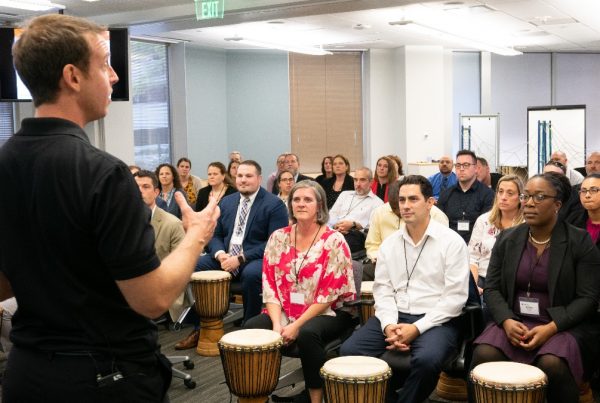When we think of love, we often think of love in the form of romantic or family relationships. Neither of these forms of love is particularly safe for work and will likely quickly lead to trouble with the HR Department. However, love can take more subtle forms, some of which can increase our effectiveness and success as working professionals. In this article, we’ll look at the power of love in the forms of belonging and communication, and touch on how you can safely bring them to your workplace.
Belonging
The power of belonging in the workplace is a fundamental factor for employee well-being and organizational success. Research consistently demonstrates that when employees feel a strong sense of belonging, it positively impacts their motivation, engagement, and overall job satisfaction. According to a study published in the Journal of Applied Psychology (Ryan & Deci, 2017), creating a workplace environment where individuals feel valued and included enhances their intrinsic motivation, which, in turn, boosts their performance and productivity. A report by the Center for Talent Innovation (2016) highlights that a sense of belonging can lead to greater innovation and collaboration among employees, ultimately driving business growth. Thus, fostering a culture of belonging not only benefits individual employees by enhancing their job experience but also contributes to the overall success and innovation of the organization.
Communication
The power of communication in the workplace is undeniably transformative. Effective communication is not merely a tool but the cornerstone of a productive and harmonious work environment. Research published in the Journal of Applied Psychology (Salancik & Pfeffer, 1978) has shown that open and transparent communication between employees and management fosters a sense of trust and transparency, leading to increased job satisfaction and reduced turnover rates. Moreover, a study by Watson Wyatt Worldwide (2005) found that companies with effective communication practices were more likely to outperform their peers financially. Effective workplace communication is a linchpin for conveying information, resolving conflicts, fostering collaboration, and nurturing a positive organizational culture, ultimately contributing to improved employee well-being and organizational success.
Building Belonging and Communication
Both belonging and communication can be enhanced in teams that share common experiences that center around the accomplishment of a collective goal. Experiential training that involves learning to play hand drums is an excellent example. In this context, a group of employees begins the experience with equal status – the vast majority have not learned this skill before. From there they are challenged to use auditory, visual, and kinesthetic communication to collectively navigate the musical learning process. In learning to play together as a team, the accomplishment of a collective goal creates a tangible sense of belonging and group connection.
Conclusion
In conclusion, while what we think of as stereotypical expressions of romantic or family love might get us in trouble with our HR department, some of the more subtle forms of love can increase our effectiveness and productivity. Belonging and communication are two forms of love that are research-backed ways to increase our personal and organizational success.
Looking for a way to enhance your team’s belonging and communication? We help organizations accomplish their goals through experiential training programs that leverage the power of drumming. Get in touch with us at connect@sewabeatsusa.com or 1-800-273-1465.
Sources:
Center for Talent Innovation. (2016). Innovation, Diversity, and Market Growth: Insights from the Center for Talent Innovation’s 2016 Study. [Report] Retrieved from https://www.talentinnovation.org/_private/assets/IDI-2016-Press-Release-FINAL.pdf
Eisenbeiss, S. A., Knippenberg, D. V., & Boerner, S. (2008). Transformational leadership and team innovation: Integrating team climate principles. Journal of Applied Psychology, 93(6), 1438-1446.
Ryan, R. M., & Deci, E. L. (2017). Self-determination theory: Basic psychological needs in motivation, development, and wellness. Guilford Publications.
Salancik, G. R., & Pfeffer, J. (1978). A social information processing approach to job attitudes and task design. Administrative Science Quarterly, 23(2), 224-253.
Watkins, P. C., Uhder, J., & Pichinevskiy, S. (2018). Gratitude and well-being: A review and theoretical integration. Journal of Occupational and Organizational Psychology, 91(3), 531-555.
Watson Wyatt Worldwide. (2005). Communication ROI Study: Linking Communication to Financial Performance. [Report] Retrieved from https://www.towerswatson.com/~/media/reports/2005/03/towers-watson-communication-roi-study-linking-communication-to-financial-performance.pdf





